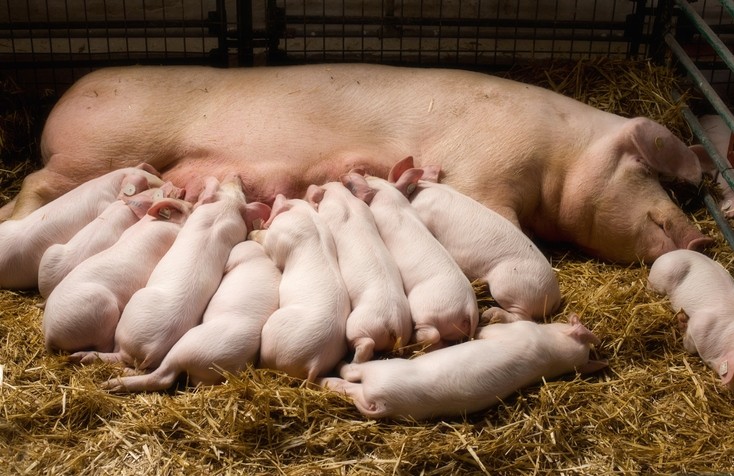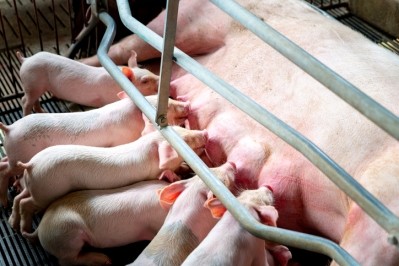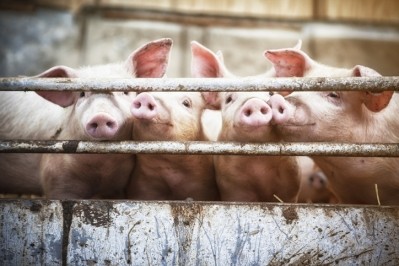Investigating the potential of sow nutrition to slash stillbirth rates, boost colostrum levels

While today’s sows are producing larger litters, challenges such as high stillbirth rates remain - around 10% in high prolific herds - along with the other productivity hurdles such as low birthweight piglets.
Data presented by Pieter Langendijk, research scientist, Trouw Nutrition, at ESPHM 2020+1, suggests that focusing interventions on both piglets and sows may reduce asphyxia – oxygen deprivation - and stillbirth.
“We started this project about six years ago, knowing that that stillborn rate was a big problem in the swine industry, the subsequent impact it has on productivity. We wanted to reduce the stillborn rates. What we did first was to try and identify what were the underlying causes of stillbirths. We tried to determine why some sows take so long to farrow, one of the biggest issues related to stillbirths, and see why certain sows have stillborn piglets and others [around 40%] do not. After identifying the underlying factors, we then wanted to build on that, and develop solutions, preferably nutritional ones,” he told FeedNavigator.
Risk factors for stillbirths
The scientists, through intensive monitoring, determined that one risk factor for stillbirths was the level of calcium in the sow’s blood. “We took frequent blood samples, and, by doing so, we were able to establish that there were differences in blood calcium levels in the sows with a long farrowing process and stillborn piglets compared to those with shorter farrowing times and no stillbirths. We could see that sows that didn’t have compromised farrowing were able to maintain calcium levels throughout the farrowing period whereas the other sows showed a drop in blood calcium levels.”
The team also noted constipation was a contributory factor in terms of the extended farrowing process. “The hypothesis is that the pain associated with constipation acts as a stressor, and we know that other stressors in sow production – her confinement to a crate prior to farrowing, for example – can block the secretion of oxytocin, the hormone responsible for uterine contractions.”
Along with evaluating the sows’ status, the researchers made observations on piglets - some of that work including the taking of blood samples from the umbilical cord as the animals were born. The team wanted to evaluate lactate concentrations in the piglets’ blood, given that they are an indicator of asphyxia.
“We took blood samples immediately on birth, literally as the piglets came out, before they started breathing, to get an indication of the oxygenation status of the piglets before they were born. From that we discovered the longer the farrowing process takes and the later the piglets arrive – their birth order - we saw a deterioration in their oxygenation status.”
The researchers also saw that piglets that are born alive but have poor oxygenation status will have compromised neonatal development and survival. Such animals may perform poorly in the sense that they are slower to drink their first colostrum and they may take in less colostrum in the first 24 hours of life. They also may show limited gain in the first weeks of life. “We followed through on piglets up to slaughter, around four months later, and we still saw that the oxygenation status at birth was linked to gain throughout that whole period."
Mobilizing calcium resources
The research findings prompted Trouw Nutrition to develop a drinking water additive that aims to reduce farrowing time and increase oxygenation in piglets. The company recommends the sow starts taking that product around five days before farrowing. “The additive is designed to trigger a mechanism that allows the sow the mobilize calcium from her bones, so that she can maintain calcium levels when she starts to farrow. That is one mode of action. There are also some ingredients in the product that improve oxygen transfer from the maternal blood, across the placenta, to the piglets. Through that process, we make sure that even those piglets at the end of the farrowing process have improved oxygenation levels,” remarked the researcher.
The additive was released on the Polish market two years ago. Studies undertaken on commercial farms there confirmed the product’s efficacy post-launch, said Langendijk. In terms of feedback generated on the additive since then, Polish farmers “have reported benefits in terms of number of piglets born alive and the performance of neonatal piglets.”
While the product was initially designed for application in water, Trouw Nutrition is in the process of developing a version now for use in dry feed, either for application in complete diets or a as a top dressing, he said.
Boosting colostrum production
Another research project being run by the company is one that is focused on neonatal piglet performance, with a particular emphasis on boosting colostrum production in the sow.
“We are trying to increase the volume of colostrum available for neonatal piglets because that is the second bottleneck. Post birth, the amount of colostrum piglets consume has a major impact on their survivability.
“We know that the minimum amount the neonatal piglet needs is somewhere around 250g and, above that, survivability increases dramatically. So what we are aiming at is getting piglets above that threshold. We think the sow is the limiting factor. We are trying to get her to produce more colostrum so there is a sufficient amount even for those piglets at the end of the farrowing process.”
Another swine targeted Trouw Nutrition project, which got underway mid-way through last year, is evaluating how to improve piglet birth weight, specifically through increasing the size of the mother’s placenta. “We know there is a strong relationship between the size of the placenta and the ultimate birth weight but there is a link as well between placenta size and the variation in the litter, between the lightest and the heaviest piglets. Reducing that variation is really the key to piglet survivability,” added Langendijk.















